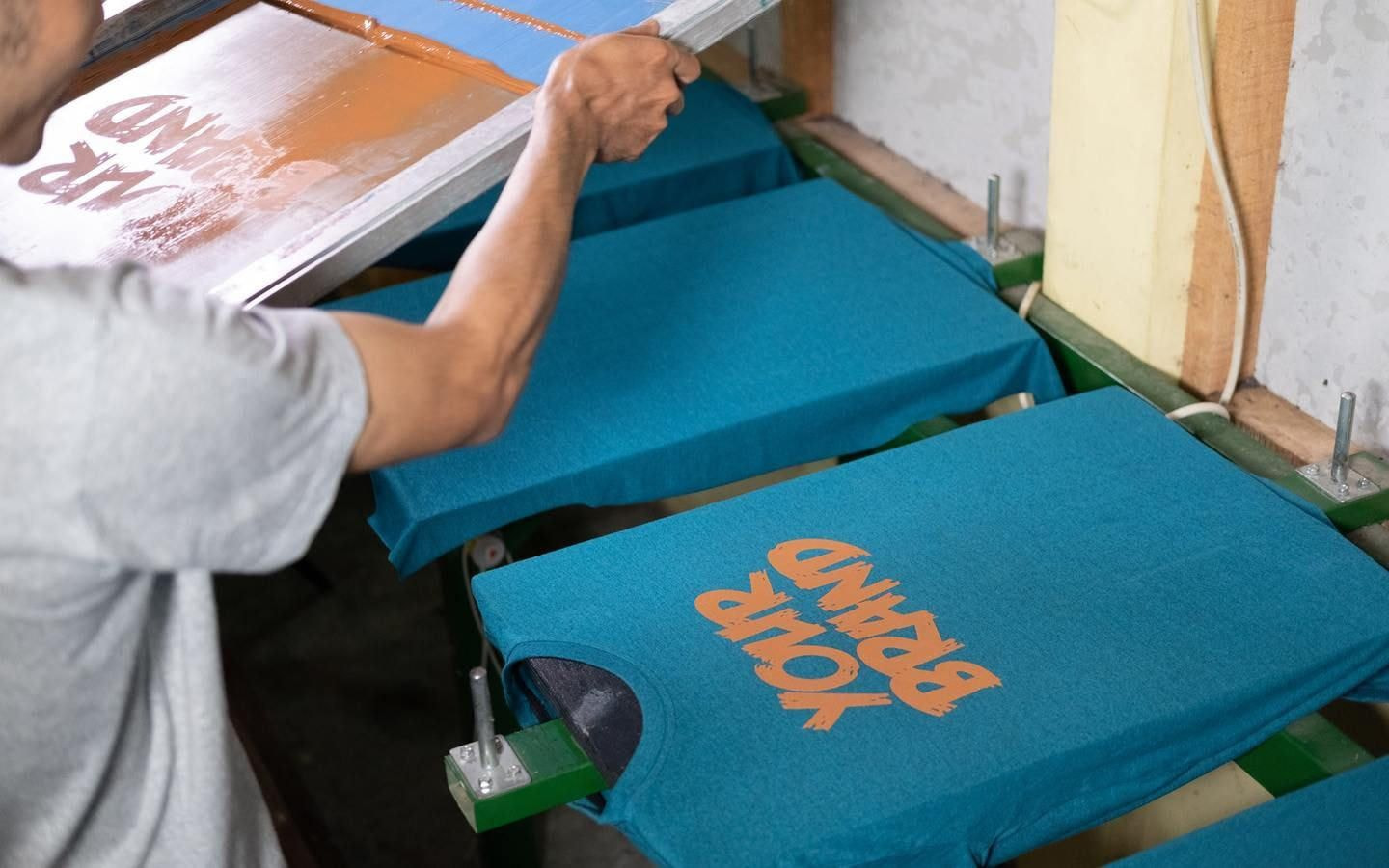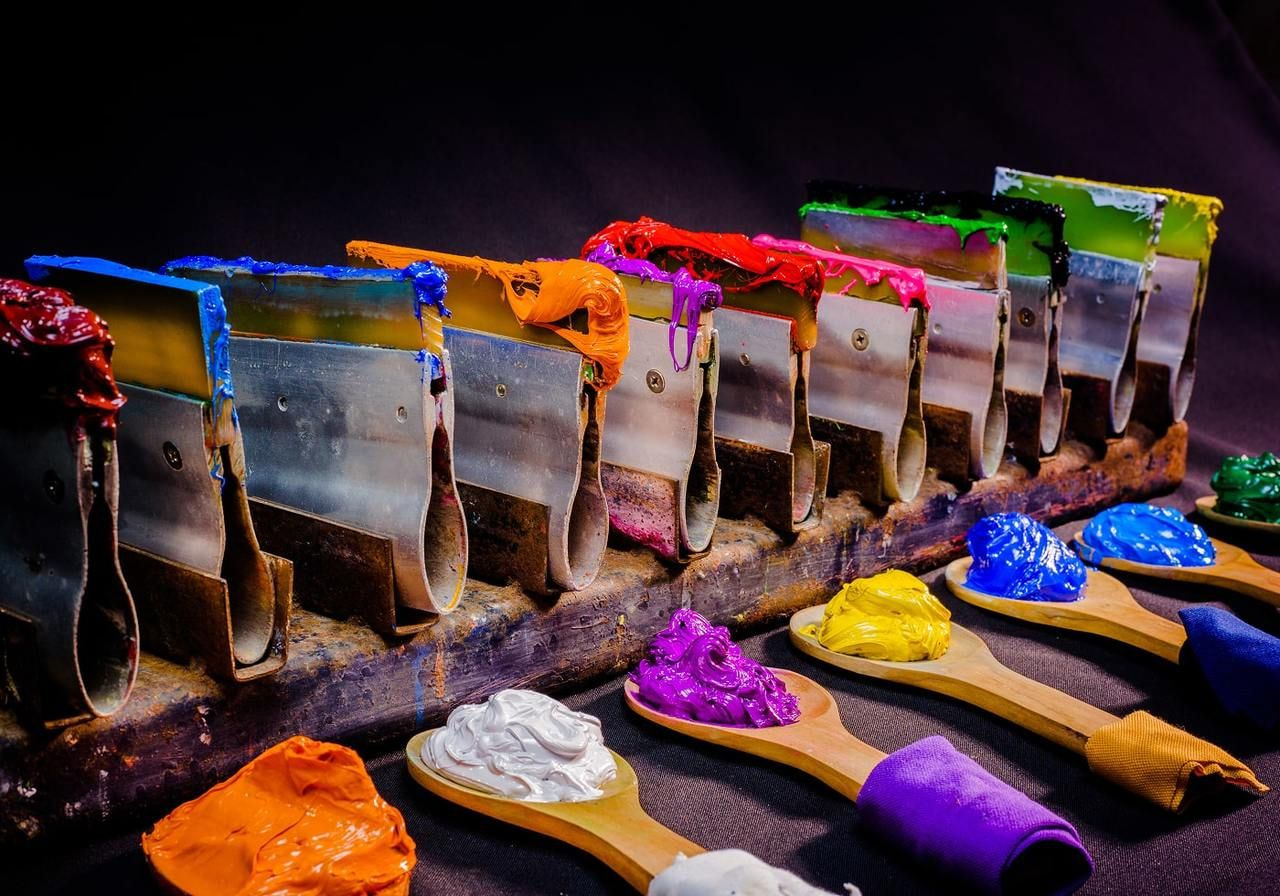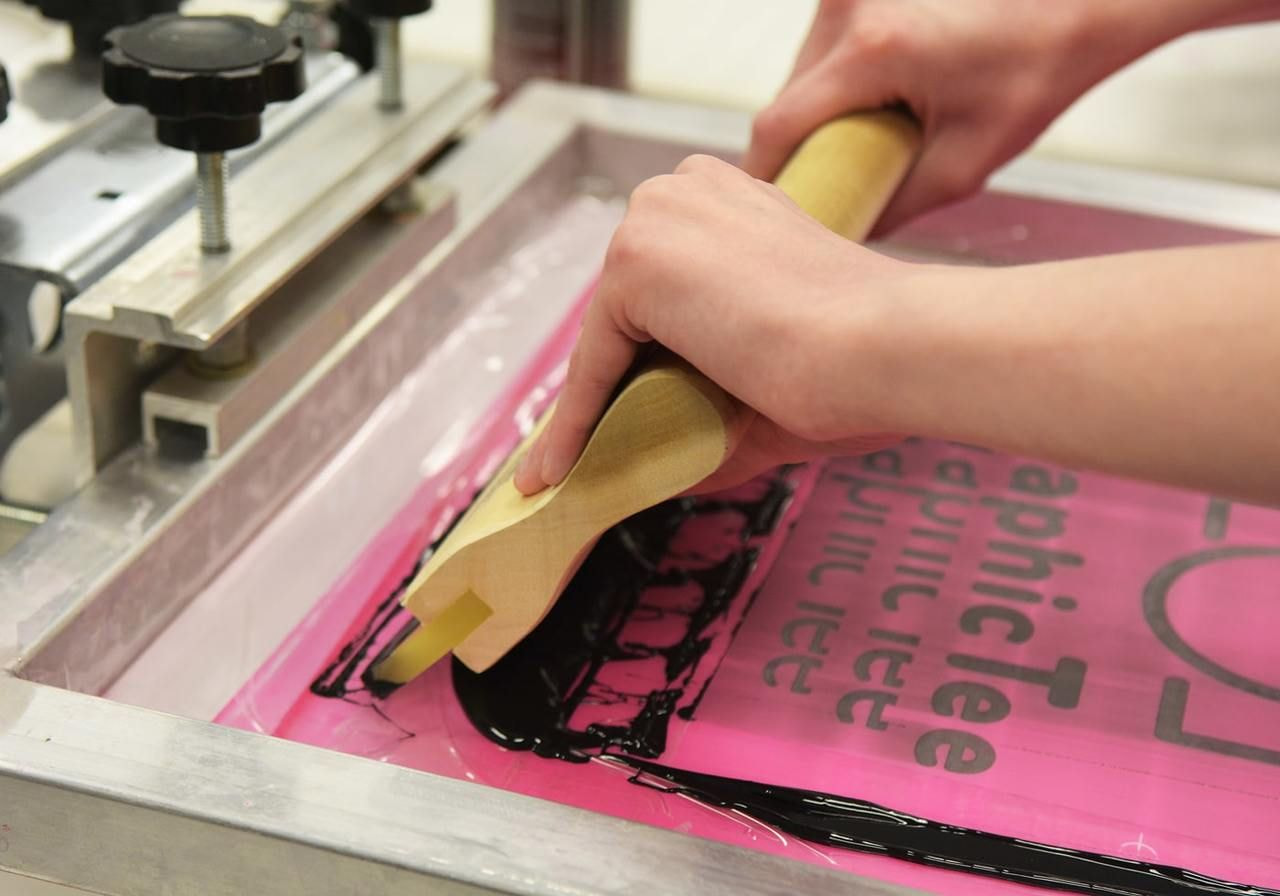Table of contents
When you’re building a clothing brand or selling merch through Print on Demand, one of the biggest choices you’ll face is which printing method to use. Two that are compared very often are DTF vs screen printing.
At first glance, they may look similar – both put ink on fabric and deliver designs people love to wear. But once you dig into the details, you’ll see big differences in how they’re produced, the types of designs they support, and how cost-effective they are for different order sizes.
Let’s explore how each method works, their pros and cons, where each shines, and what makes sense for your business.
Key takeaways
-
Direct-to-film (DTF) printing is ideal for small batches and custom designs. It offers detailed prints, vibrant colors, and flexibility across many fabric types.
-
Screen printing is best for bulk orders and bold designs. It delivers durable prints that stay strong after many washes.
-
The DTF printing process supports complex designs and full color prints, while screen printing requires a separate screen for each color, which adds time and cost.
-
Setup costs differ. DTF comes with a higher initial investment but has lower setup costs per job, while screen preparation is cheaper at first but becomes costly for small quantities.
-
The right choice between DTF vs screen printing depends on order size, design complexity, and fabric type. Printful offers both methods so you can focus on selling instead of managing production.
Quick overview: DTF vs screen printing at a glance
|
Print method |
Best for |
Pros |
Cons |
|
Small runs, multi-color designs, full color prints, detailed graphics |
Works on light and dark fabrics, lower setup costs, high print quality, sharp details, fast turnaround |
Slight plastic feel, initial investment in equipment is high |
|
|
Screen printing |
Bulk orders, bold logos, simple designs |
Long-lasting prints, cost-effective for high volumes, textured finishes, works on diverse surfaces (fabric, wood, metal, glass) |
High setup costs, slower production speed, limited complex designs, requires a separate screen for each color |
What is DTF printing?
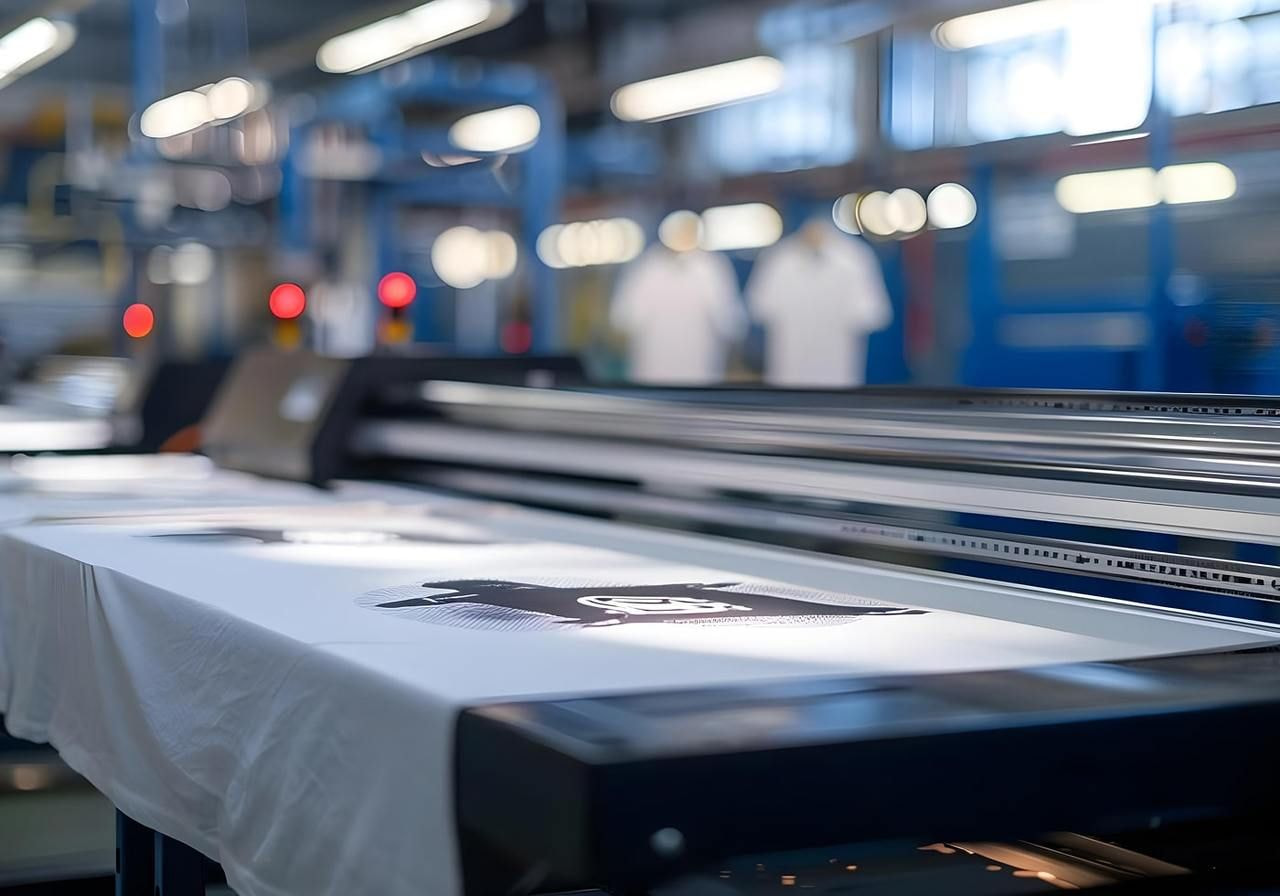
DTF (direct-to-film) is a digital printing process where your design is first printed onto a special film and then transferred to fabric using a heat press. This technique produces detailed prints with sharp edges and vibrant colors, making it one of today’s most popular printing methods for apparel.
Because DTF doesn’t rely on stencils or screens, it handles custom designs with unlimited colors, gradients, and even photo-quality images. It also works on a wide variety of textiles – including light, dark, and textured fabrics, cotton, fleece, blends, and some synthetic materials – so you can expand your product range without worrying about color limitations.
How does DTF printing work?
The process starts with the design being printed onto a special film with water-based inks. While the ink is still wet, an adhesive powder is applied so the print will bond to the fabric. After curing, the film is applied to the garment with a heat press.
Once the transfer film is peeled away, the garment is pressed again to secure the design and ensure its durability.
Because the process is digitally controlled, DTF can produce intricate designs, full color images, and detailed graphics with a fast turnaround. This makes it a popular choice for Print on Demand and small-scale apparel production.
A step beyond: Printful’s DTFlex
Printful’s DTFlex is an advanced version of direct-to-film printing, designed to deliver even sharper detail, richer colors, and a smoother finish. The process starts by printing your design onto a special transfer film using water-based pigment inks, then coating it with a fine adhesive powder that’s heat-cured for better bonding.
The film is pressed onto the fabric with a heat press, and after a short cold peel, the design leaves behind a flexible, vibrant print that feels soft to the touch. Compared to standard DTF, DTFlex uses a thinner color layer for improved stretch and breathability, making it ideal for premium apparel lines that demand both comfort and quality.
What is screen printing?
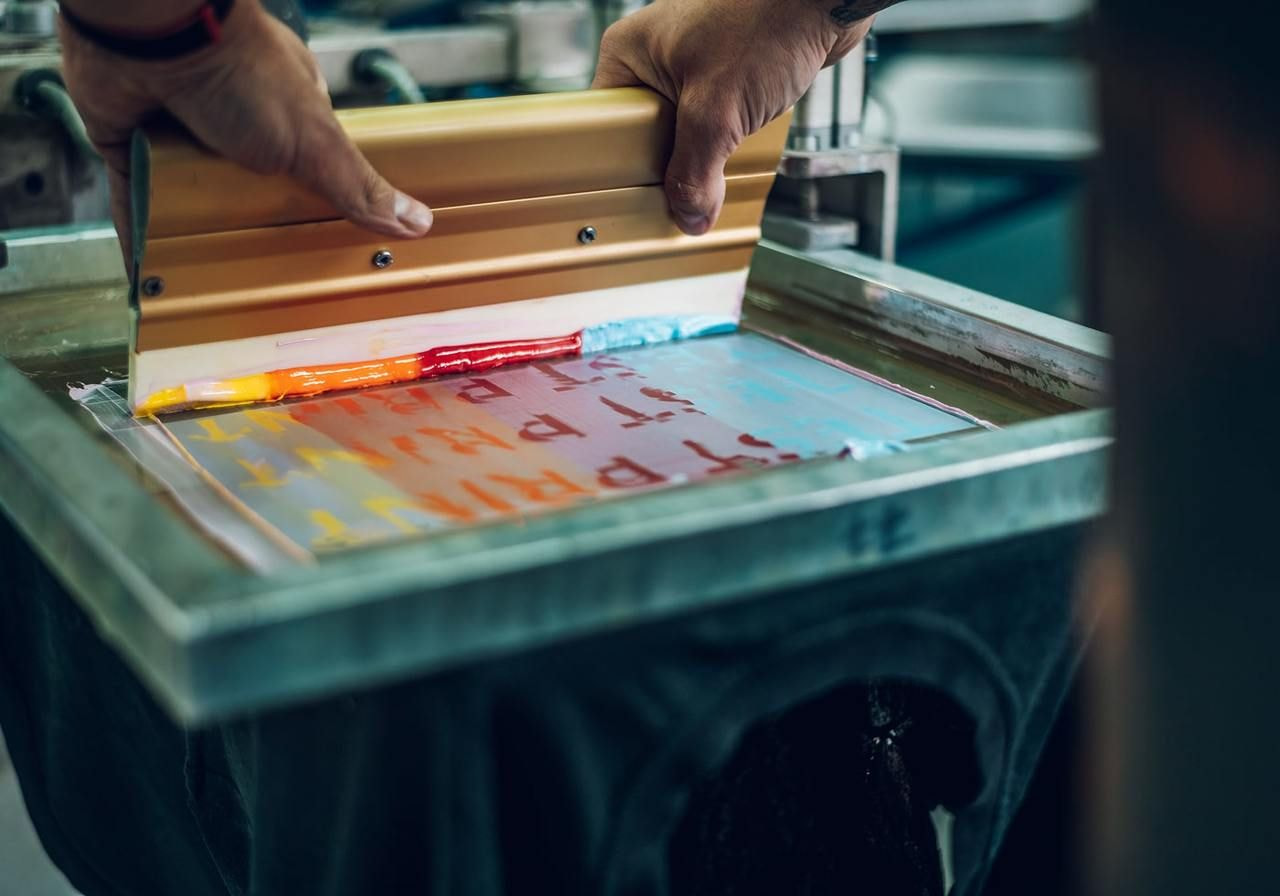
Traditional screen printing is a method where ink gets pressed through a mesh stencil to create a design on fabric. Each color requires a separate screen, so the artwork is built one color coating at a time.
The stencil is made by coating the screen with a light-sensitive emulsion and hardening it under UV light, leaving open spaces for the ink.
Though more labor-intensive and time-consuming, the screen printing process is valued for its results. IT produces vibrant colors, textured effects, and durable prints.
It’s also one of the longest-standing techniques in the printing industry, trusted by brands for its consistent, professional results and versatility.
Screen printing also works on a wide range of fabric types – from cotton and polyester to blends, denim, and fleece – and even extends to materials like canvas, wood, or glass.
Valuable read: What is Screen Printing: Your All-in-One Roadmap
How does screen printing work?
The screen printing process starts by coating a mesh screen with a light-sensitive emulsion. A design is placed on top, and when exposed to UV light, the emulsion hardens everywhere except the artwork, leaving open areas where ink can pass through.
Next, ink is pulled across the screen with a squeegee, pushing it through the stencil and onto the fabric. If the design has multiple colors, printers create different screens for each color layer, curing the ink between steps until the detailed design is complete.
The final result is a bold, textured print that feels built into the garment. Screen printing is optimal for bulk orders and simple designs. It can be time-consuming and more costly when working with complicated designs or small quantities.
DTF vs screen printing: Key comparisons
Let’s get into our DTF vs screen printing comparison, including their strengths, limitations, and where each method works best.
Print quality and durability
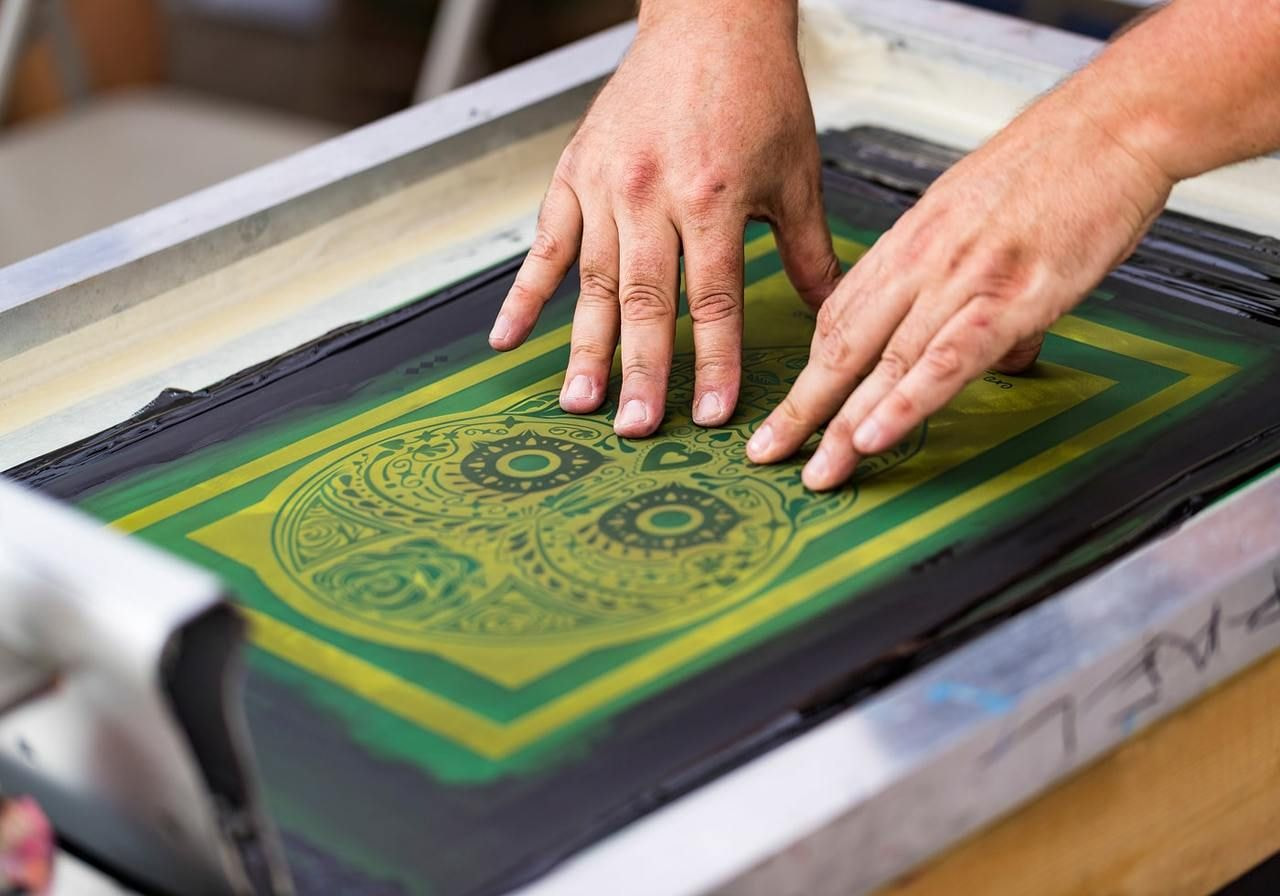
When comparing DTF vs screen printing quality, the right method for your products depends on what matters most – detail and color flexibility or long-lasting durability.
DTF printing delivers high-quality prints with sharp details, gradients, and photo-realistic effects. The finish feels smooth after a few washes, though very large designs may feel heavier on the fabric.
Screen printing is the durability champion. They withstand years of washing without fading. However, its color limitations make it less suited for complicated designs, photos, or ultra-detailed prints.
Design complexity and number of colors
DTF transfers let you use multiple colors, gradients, or complex designs.
Screen printing requires one separate screen per color. That means more screens, more ink, and more time, making intricate details harder to achieve. It’s better for designs with a few well-defined colors.
Fabrics and surfaces
DTF adapts to light and dark fabrics, polyester blends, leather, and hard surfaces like wood, ceramics, glass, and plastic.
Screen printing works best on cotton and blends, but it can also be applied to surfaces like paper, wood, canvas, metal, or glass.
Screen printing can also be more environmentally friendly when water-based inks are used.
Order size and production speed
DTF printing has a quick setup and lower setup costs, making it ideal for small runs, one-offs, and on-demand fulfillment.
The screen printing process takes more time, but once the screens are prepared, it’s pretty smooth sailing.
Costs and setup
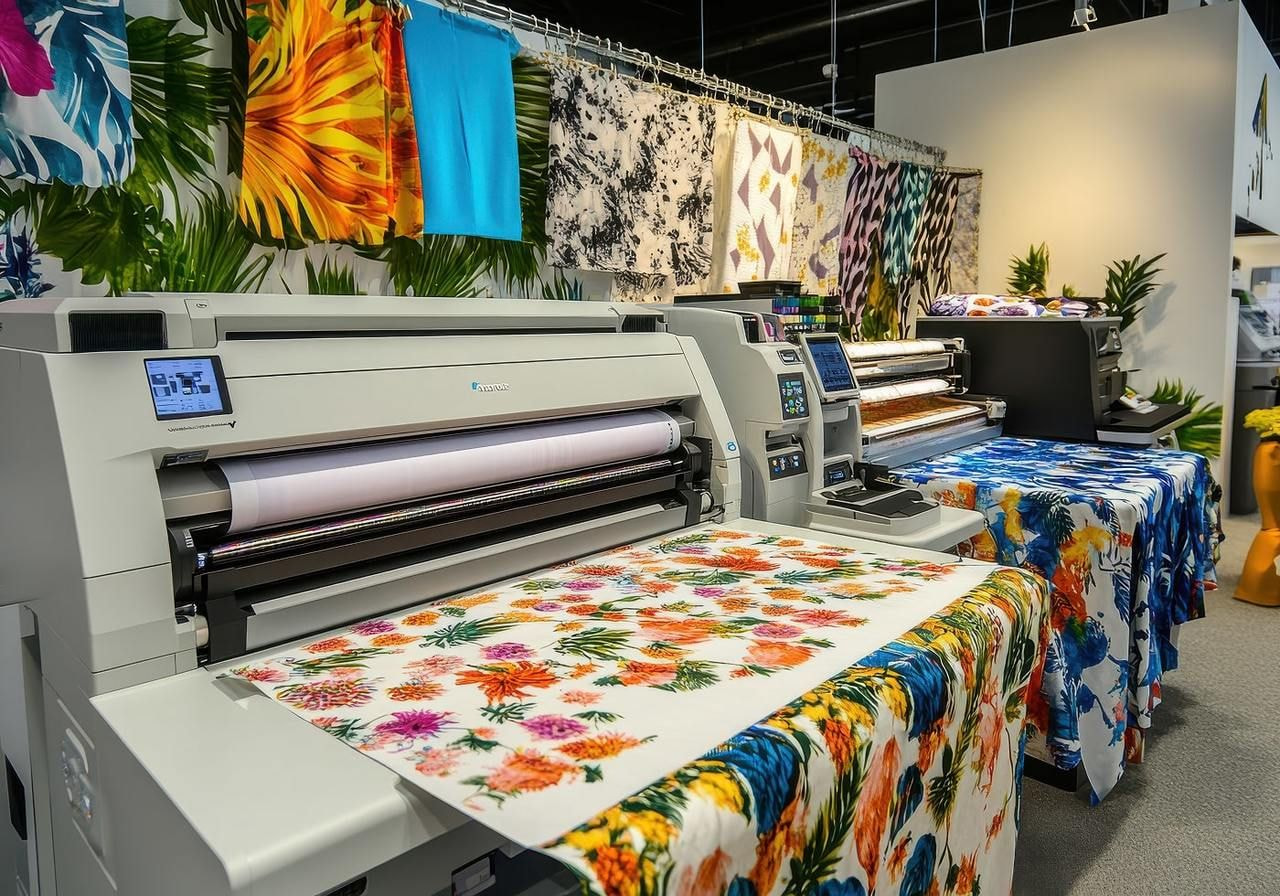
Setting up direct-to-film (DTF) equipment requires a big investment in printers, powders, films, and inks. The upside is that once the system is running, each individual order is pretty low cost, making it well-suited for small batches and custom jobs.
The opposite is true with screen printing. The equipment itself is cheaper to start with, but every new design needs fresh screen preparation, which adds significant setup costs each time. For that reason, screen printing is financially practical only when producing in bulk.
Which should you choose?
The choice between DTF vs screen printing comes down to design needs and order size.
Go with DTF printing when you need intricate designs, full-color prints, or photos, or want to handle custom designs in small batches without worrying about high setup costs. It’s flexible, fast, and ideal for on-demand fulfillment.
Choose screen printing when the priority is bulk orders, long-lasting prints, and bold designs with that classic textured feel. For large batches, it’s still one of the most cost-effective and reliable printing methods available.
So, is DTF better than screen printing? It depends. DTF wins on versatility and design complexity, while screen printing remains the go-to for large quantities and proven durability through repeated washes.
Printing made easy with Printful and Print on Demand
Buying printers, presses, and other equipment to do DTF or screen printing in-house can be expensive and labor-intensive. That’s where Printful’s print-on-demand service comes in.
Instead of handling production yourself, you can create designs, upload them, and let Printful manage the printing, packaging, and shipping, saving you time and money.
DTF printing at Printful is available for a wide range of products, from quality t-shirts to cotton-poly blend hoodies. We handle detailed designs, small batch orders, and custom prints with ease, making this the best way to sell merch online or stock up for your event, company, or in-person store.
Screen printing at Printful is built for bulk orders of 500+ items. Since each color needs a different screen, it becomes most cost-effective at scale, where the price per unit drops as quantities increase. It’s a reliable choice for bold designs or simple logos that need durable prints and consistent quality across large batches.
How to get started with Printful
-
Create your free Printful account.
-
Pick a product – Explore the Printful Catalog and select an item that works with DTF (for small runs) or screen printing (for bulk orders).
-
Upload your design – Add your artwork or use the Design Maker to create custom art that your customers or crew will love.
-
Publish or order – Connect your store and list the product for sale, or order samples. For screen print transfers, request a custom quote and we’ll get it to you within 48 hours.
Printful gives you access to DTF printing for on-demand flexibility and screen printing for bulk orders without the need to buy or maintain expensive equipment.
FAQ: Screen printing vs DTF
While versatile, DTF prints can feel slightly plastic, especially on large designs. They also don’t breathe as well as traditional ink layers. Plus, if you want to manage production yourself, the upfront investment in equipment is steep.
Printful’s DTFlex technology has addressed many of these drawbacks. Its thinner color layer offers better stretch, softness, and breathability while keeping the same vibrant look and long-lasting durability.
They’re better if you need custom prints or detailed prints or want to sell on demand without worrying about setup expenses. But for large bulk orders, screen print transfers are still more cost-effective.
Not always. DTF is better for complex designs and on-demand fulfillment, while screen printing excels at bulk orders and long-term wear.
DTF uses a digital printing process with transfer film applied by a heat press. Screen printing is a more traditional method where ink is layered through stencils created with UV light. It involves printing each layer of color separately, which is why it can be more time-consuming for intricate, multicolor designs.
Both create fantastic prints if used for the right kind of design. DTF offers sharp details, vibrant colors, and clear images. Screen printing produces high durability and a classic textured look with rich colors that stand the test of time.
Final thoughts
The choice between DTF vs screen printing isn’t about which is universally better – it’s about which is better for your business model and designs.
Running a shop with on-demand fulfillment and custom designs? DTF is your best ally.
Serving large teams, events, or wholesale in bulk? Screen printing is the method for you and remains one of the most cost-effective and trusted printing techniques worldwide.
Whichever path you take, Printful has the tools and services to bring your designs to life with vibrant colors, high quality prints, and fulfillment options built for growth.
Read next:



By Aesha Ansari
Aesha is a freelance content writer. She is also getting her Bachelor’s in Intl. Communication Management. And not so surprisingly, reading is her favorite hobby.





